DL-Menthol
Modify Date: 2024-01-01 23:08:34
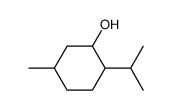
DL-Menthol structure
|
Common Name | DL-Menthol | ||
|---|---|---|---|---|
| CAS Number | 15356-70-4 | Molecular Weight | 156.26500 | |
| Density | 0.89 g/mL at 25ºC(lit.) | Boiling Point | 216ºC(lit.) | |
| Molecular Formula | C10H20O | Melting Point | 34-36ºC(lit.) | |
| MSDS | N/A | Flash Point | 200 °F | |
| Name | (+/-)-p-Menthan-3-ol |
|---|---|
| Synonym | More Synonyms |
| Density | 0.89 g/mL at 25ºC(lit.) |
|---|---|
| Boiling Point | 216ºC(lit.) |
| Melting Point | 34-36ºC(lit.) |
| Molecular Formula | C10H20O |
| Molecular Weight | 156.26500 |
| Flash Point | 200 °F |
| Exact Mass | 156.15100 |
| PSA | 20.23000 |
| LogP | 2.43950 |
| Vapour Pressure | 1.13E-08mmHg at 25°C |
| Storage condition | 2-8°C |
Synonym: Peppermint Camphor SECTION 2 - COMPOSITION, INFORMATION ON INGREDIENTS
Risk Phrases: None Listed. SECTION 3 - HAZARDS IDENTIFICATION EMERGENCY OVERVIEW The toxicological properties of this material have not been fully investigated. Potential Health Effects Eye: May cause severe eye irritation. Skin: May cause skin irritation. May cause skin sensitization, an allergic reaction, which becomes evident upon re-exposure to this material.
Ingestion: May cause irritation of the digestive tract. The toxicological properties of this substance have not been fully investigated. Inhalation: May cause respiratory tract irritation. May cause methemoglobinemia, cyanosis (bluish discoloration of skin due to deficient oxygenation of the blood), convulsions, tachycardia, dyspnea (labored breathing), and death. The toxicological properties of this substance have not been fully investigated. Chronic: Not available. SECTION 4 - FIRST AID MEASURES Eyes: Immediately flush eyes with plenty of water for at least 15 minutes, occasionally lifting the upper and lower eyelids. Get medical aid immediately. Skin: Get medical aid. Immediately flush skin with plenty of water for at least 15 minutes while removing contaminated clothing and shoes. Ingestion: If victim is conscious and alert, give 2-4 cupfuls of milk or water. Get medical aid immediately. Inhalation: Remove from exposure and move to fresh air immediately. If not breathing, give artificial respiration. If breathing is difficult, give oxygen. Get medical aid. Notes to Physician: SECTION 5 - FIRE FIGHTING MEASURES General Information: As in any fire, wear a self-contained breathing apparatus in pressure-demand, MSHA/NIOSH (approved or equivalent), and full protective gear. Combustion generates toxic fumes. Extinguishing Media: For small fires, use water spray, dry chemical, carbon dioxide or chemical foam. SECTION 6 - ACCIDENTAL RELEASE MEASURES General Information: Use proper personal protective equipment as indicated in Section 8. Spills/Leaks: Sweep up or absorb material, then place into a suitable clean, dry, closed container for disposal. Avoid generating dusty conditions. SECTION 7 - HANDLING and STORAGE Handling: Wash thoroughly after handling. Remove contaminated clothing and wash before reuse. Use with adequate ventilation. Minimize dust generation and accumulation. Avoid contact with skin and eyes. Avoid ingestion and inhalation. Storage: Store in a cool, dry, well-ventilated area away from incompatible substances. SECTION 8 - EXPOSURE CONTROLS, PERSONAL PROTECTION Engineering Controls: Use adequate ventilation to keep airborne concentrations low. Exposure Limits CAS# 15356-70-4: Personal Protective Equipment Eyes: Wear appropriate protective eyeglasses or chemical safety goggles as described by OSHA's eye and face protection regulations in 29 CFR 1910.133 or European Standard EN166. Skin: Wear appropriate gloves to prevent skin exposure. Clothing: Wear appropriate protective clothing to prevent skin exposure. Respirators: Follow the OSHA respirator regulations found in 29 CFR 1910.134 or European Standard EN 149. Use a NIOSH/MSHA or European Standard EN 149 approved respirator if exposure limits are exceeded or if irritation or other symptoms are experienced. SECTION 9 - PHYSICAL AND CHEMICAL PROPERTIES Physical State: Solid Color: white Odor: none reported pH: Not available. Vapor Pressure: Not applicable. Viscosity: Not available. Boiling Point: 216 deg C Freezing/Melting Point: > 28 deg C Autoignition Temperature: Not applicable. Flash Point: Not applicable. Explosion Limits, lower: Not available. Explosion Limits, upper: Not available. Decomposition Temperature: Not available. Solubility in water: Not available. Specific Gravity/Density: 0.89 (water=1) Molecular Formula: C10H20O Molecular Weight: 156.1394 SECTION 10 - STABILITY AND REACTIVITY Chemical Stability: Stable at room temperature in closed containers under normal storage and handling conditions. Conditions to Avoid: High temperatures, incompatible materials. Incompatibilities with Other Materials: Strong oxidizers. Hazardous Decomposition Products: Carbon monoxide, carbon dioxide. Hazardous Polymerization: Has not been reported SECTION 11 - TOXICOLOGICAL INFORMATION RTECS#: CAS# 15356-70-4: OT0525000 LD50/LC50: CAS# 15356-70-4: Draize test, rabbit, eye: 1%; Draize test, rabbit, skin: 500 mg/24H Mild; Oral, mouse: LD50 = 3100 mg/kg; Oral, rat: LD50 = 2900 mg/kg; Skin, rabbit: LD50 = >5 gm/kg. Carcinogenicity: Dl-menthol - Not listed by ACGIH, IARC, or NTP. Other: See actual entry in RTECS for complete information. SECTION 12 - ECOLOGICAL INFORMATION Other No information available. SECTION 13 - DISPOSAL CONSIDERATIONS Products which are considered hazardous for supply are classified as Special Waste and the disposal of such chemicals is covered by regulations which may vary according to location. Contact a specialist disposal company or the local waste regulator for advice. Empty containers must be decontaminated before returning for recycling. SECTION 14 - TRANSPORT INFORMATION IATA Not regulated as a hazardous material. IMO Not regulated as a hazardous material. RID/ADR Not regulated as a hazardous material. SECTION 15 - REGULATORY INFORMATION European/International Regulations European Labeling in Accordance with EC Directives Hazard Symbols: Not available. Risk Phrases: Safety Phrases: WGK (Water Danger/Protection) CAS# 15356-70-4: 1 Canada CAS# 15356-70-4 is listed on Canada's DSL List. CAS# 15356-70-4 is not listed on Canada's Ingredient Disclosure List. US FEDERAL TSCA CAS# 15356-70-4 is not listed on the TSCA inventory. It is for research and development use only. SECTION 16 - ADDITIONAL INFORMATION MSDS Creation Date: 12/12/1997 Revision #2 Date: 3/18/2003 The information above is believed to be accurate and represents the best information currently available to us. However, we make no warranty of merchantability or any other warranty, express or implied, with respect to such information, and we assume no liability resulting from its use. Users should make their own investigations to determine the suitability of the information for their particular purposes. In no way shall the company be liable for any claims, losses, or damages of any third party or for lost profits or any special, indirect, incidental, consequential or exemplary damages, howsoever arising, even if the company has been advised of the possibility of such damages. SECTION 16 - ADDITIONAL INFORMATION N/A |
CHEMICAL IDENTIFICATION
HEALTH HAZARD DATAACUTE TOXICITY DATA
MUTATION DATA
|
| Hazard Codes | Xi |
|---|---|
| Risk Phrases | R37/38;R41 |
| Safety Phrases | S26-S36 |
| RIDADR | UN 1888 6.1/PG 3 |
| WGK Germany | 2 |
| RTECS | OT0525000 |
| Precursor 8 | |
|---|---|
| DownStream 8 | |
| EINECS 216-074-4 |
| menthol |
| MFCD00001484 |
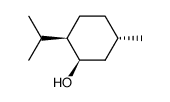 CAS#:490-99-3
CAS#:490-99-3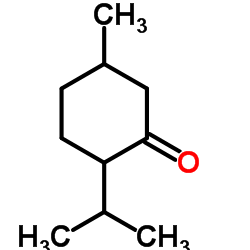 CAS#:10458-14-7
CAS#:10458-14-7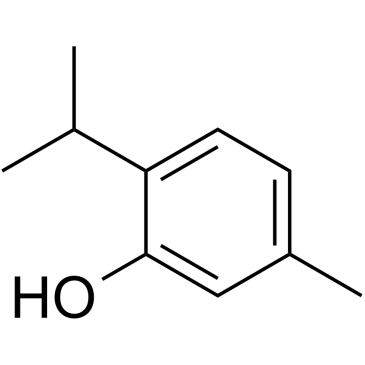 CAS#:89-83-8
CAS#:89-83-8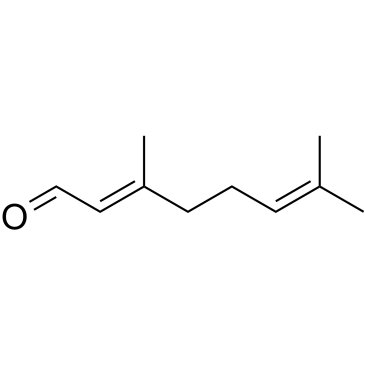 CAS#:5392-40-5
CAS#:5392-40-5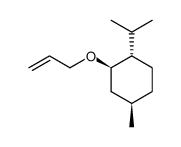 CAS#:40940-58-7
CAS#:40940-58-7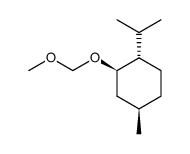 CAS#:87770-93-2
CAS#:87770-93-2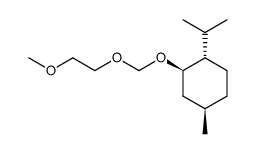 CAS#:87770-96-5
CAS#:87770-96-5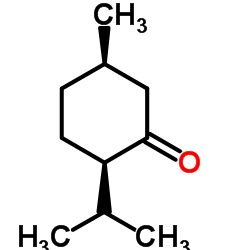 CAS#:491-07-6
CAS#:491-07-6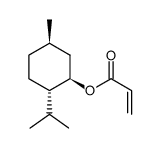 CAS#:4835-96-5
CAS#:4835-96-5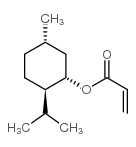 CAS#:108945-28-4
CAS#:108945-28-4 CAS#:498-81-7
CAS#:498-81-7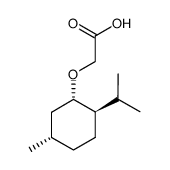 CAS#:94133-41-2
CAS#:94133-41-2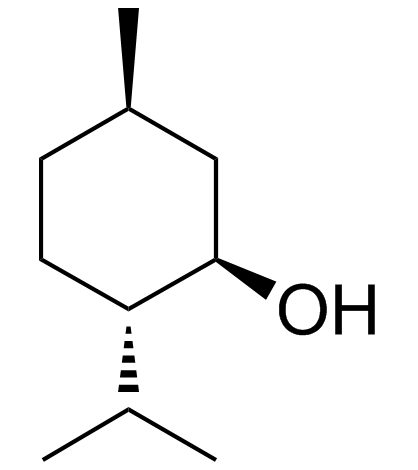 CAS#:2216-51-5
CAS#:2216-51-5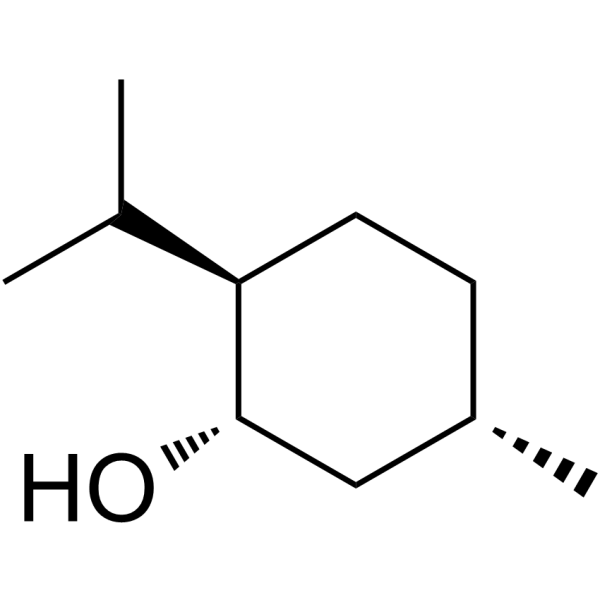 CAS#:15356-60-2
CAS#:15356-60-2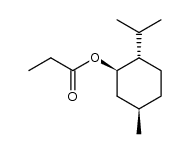 CAS#:29066-36-2
CAS#:29066-36-2